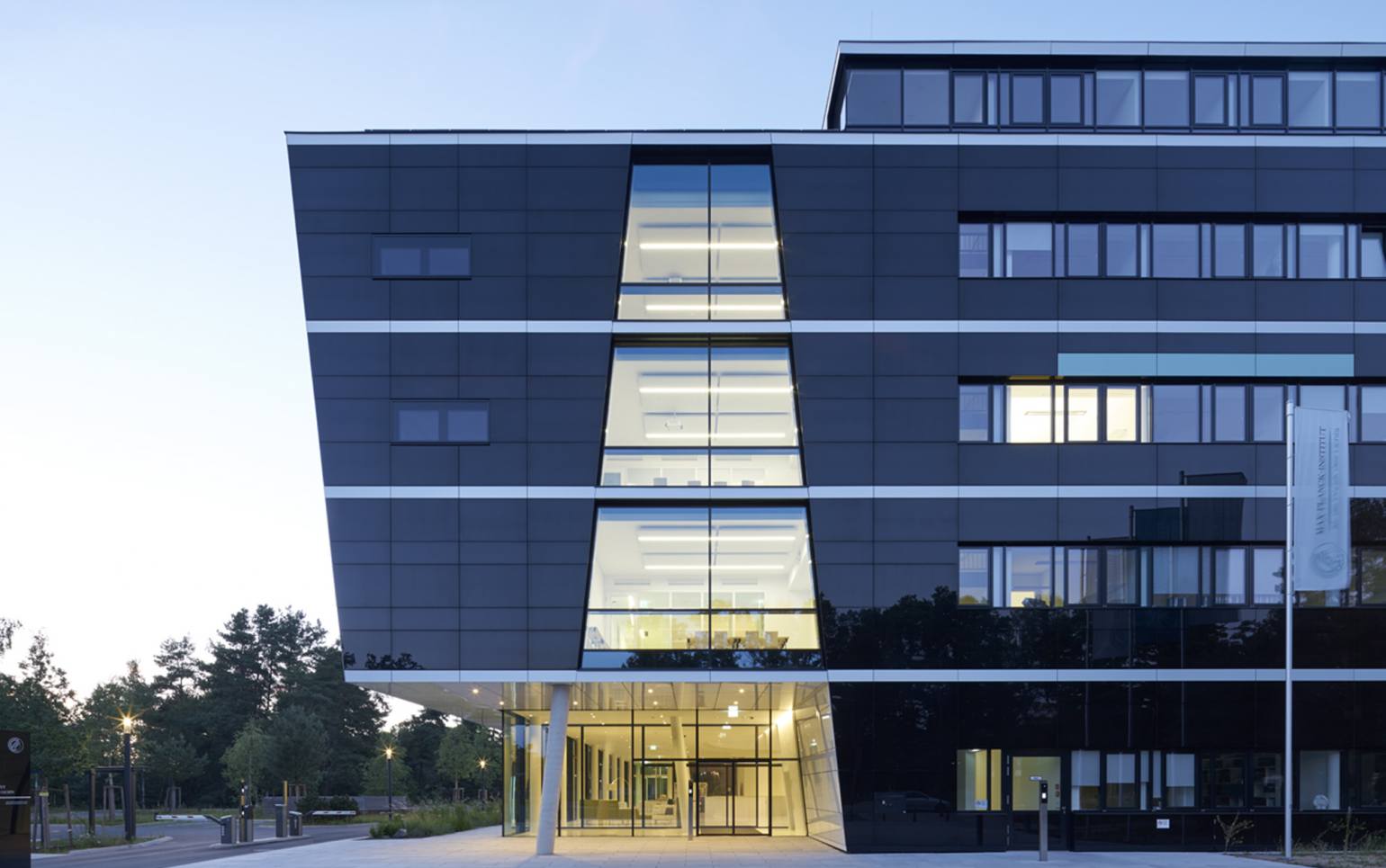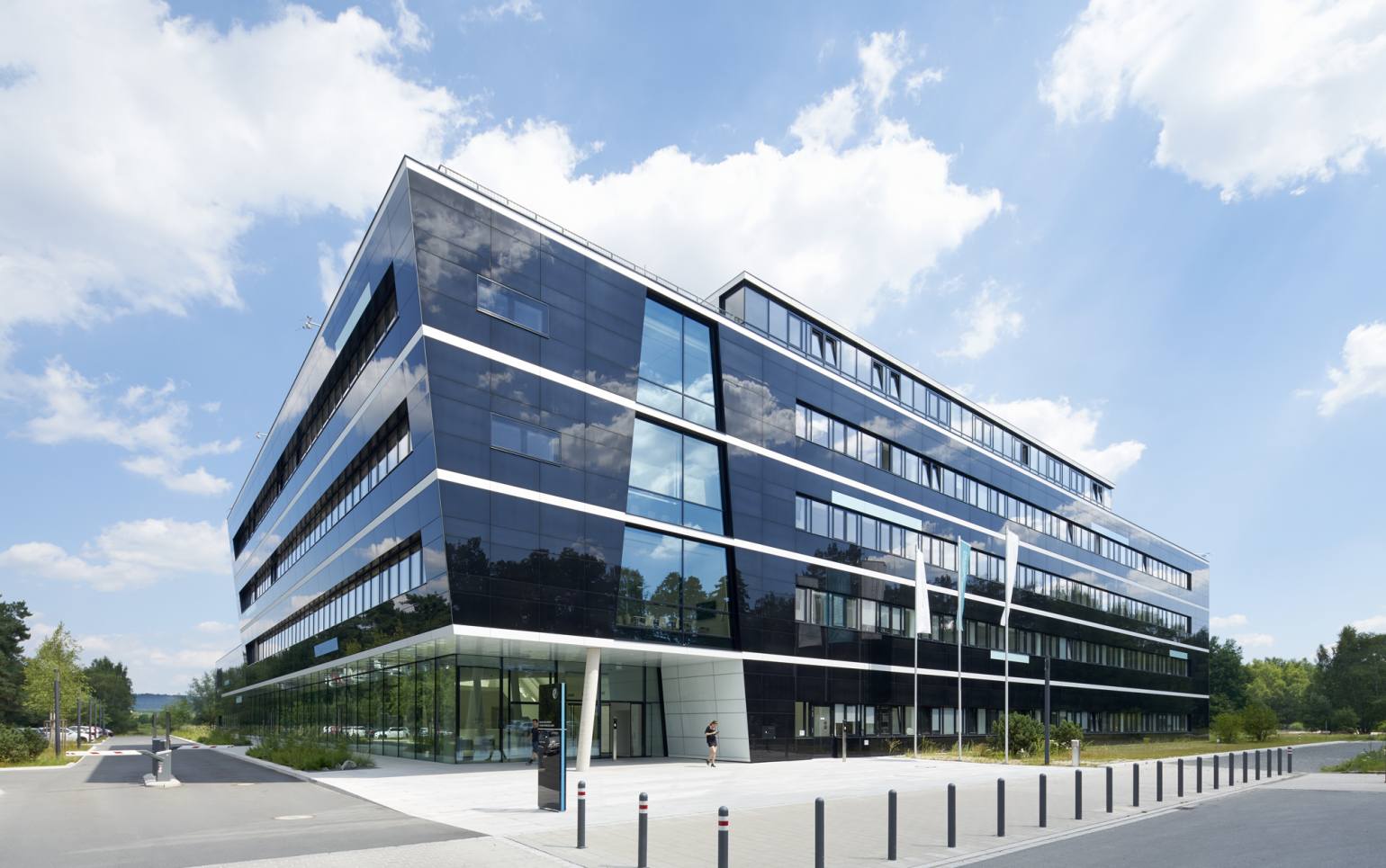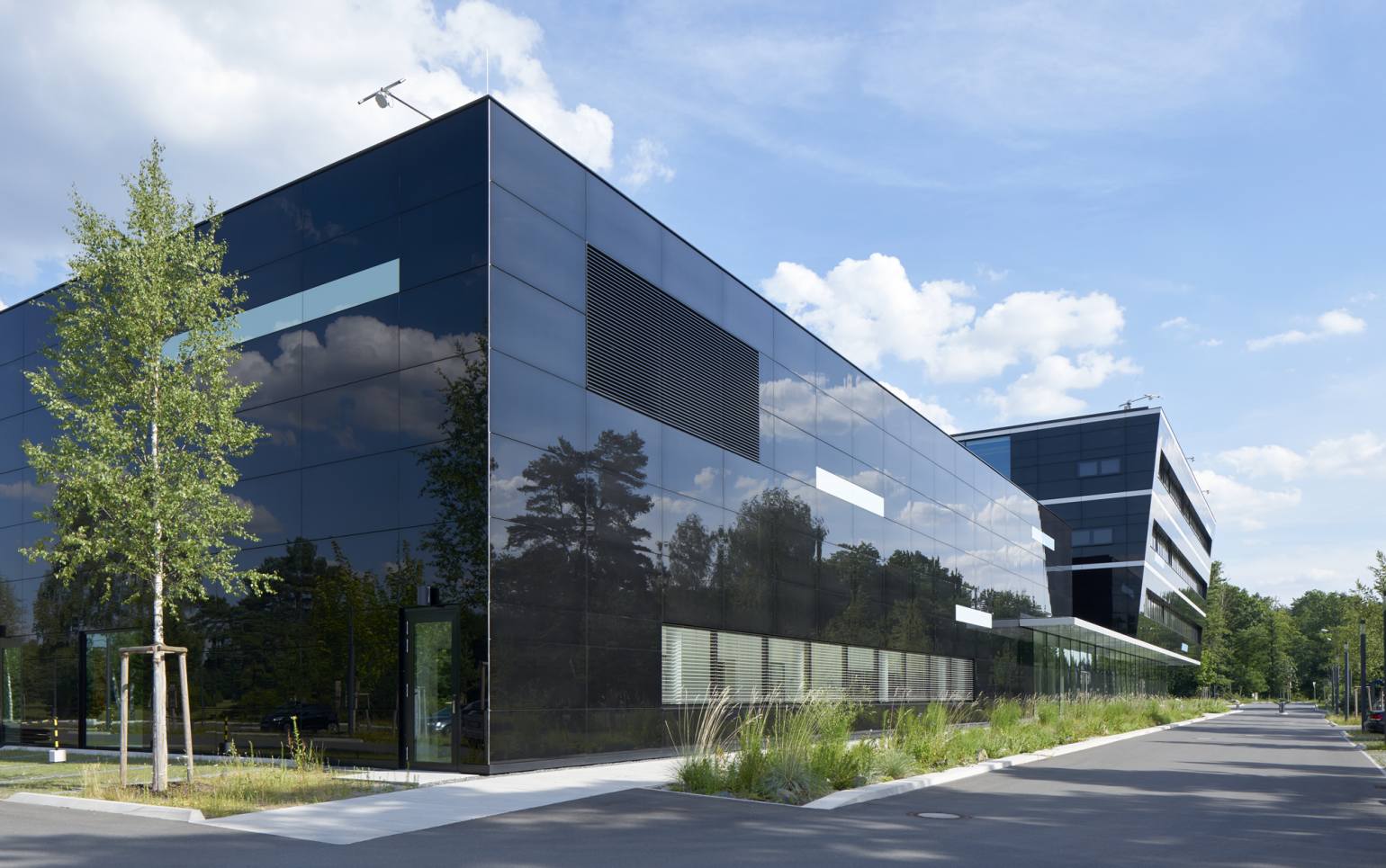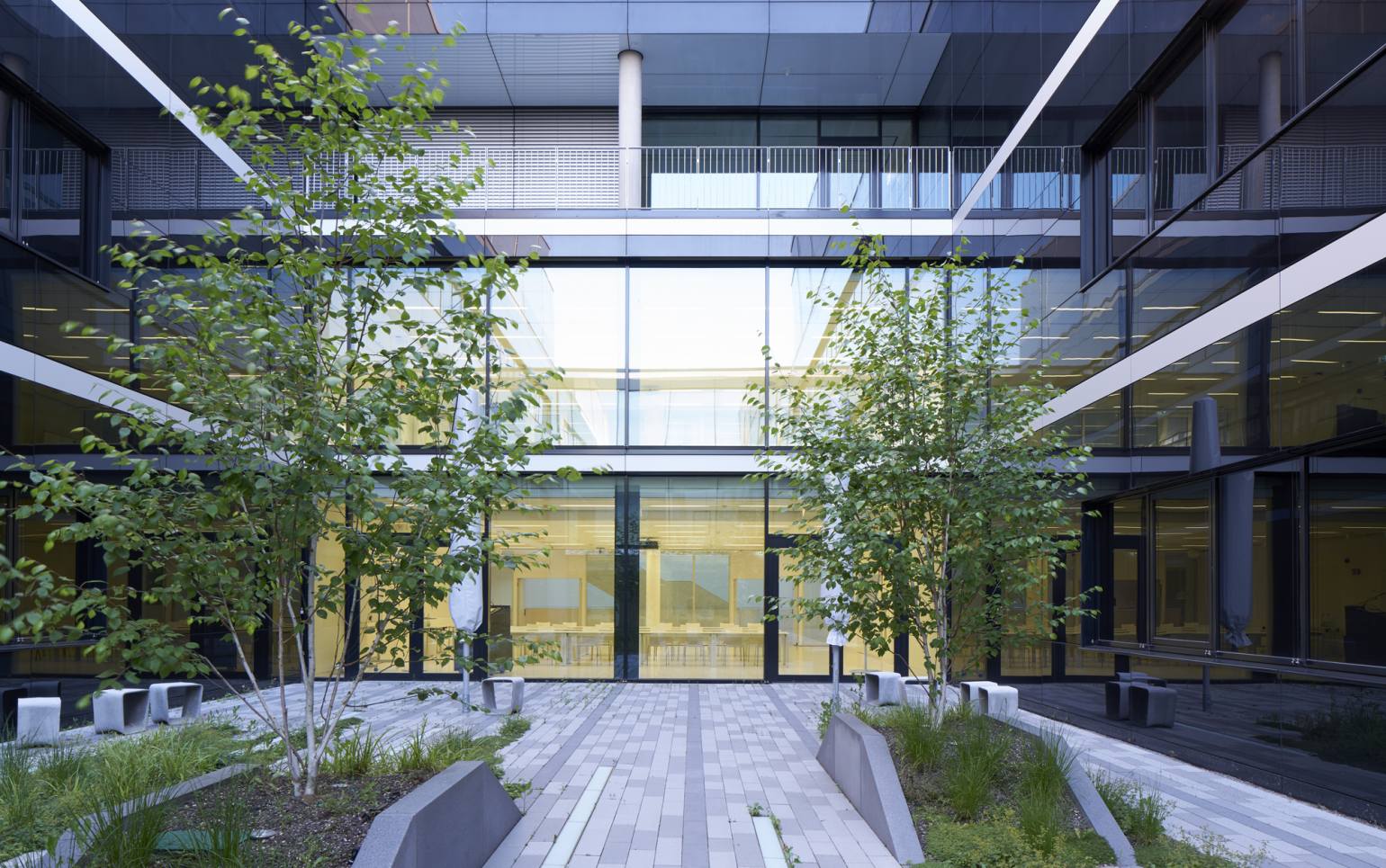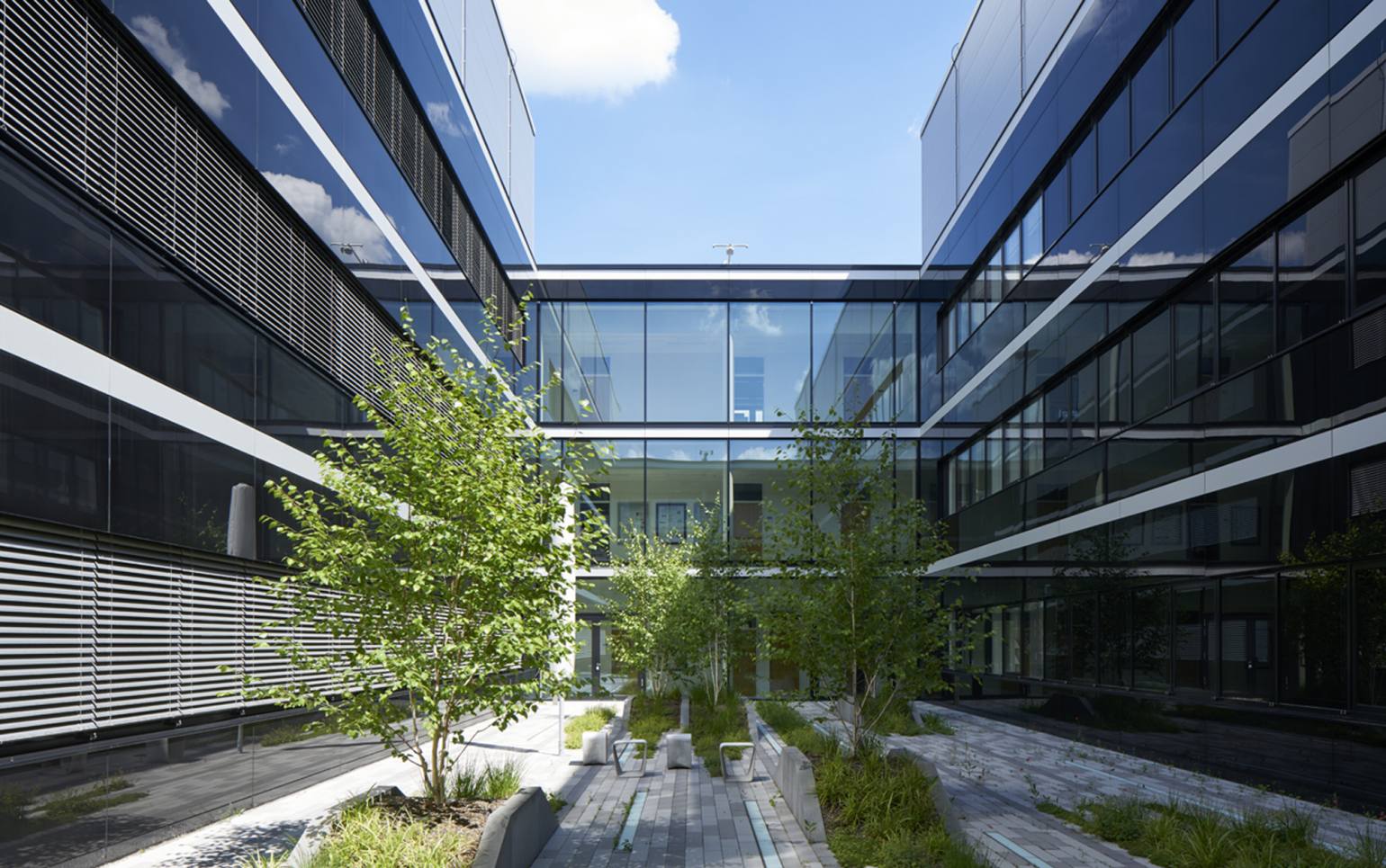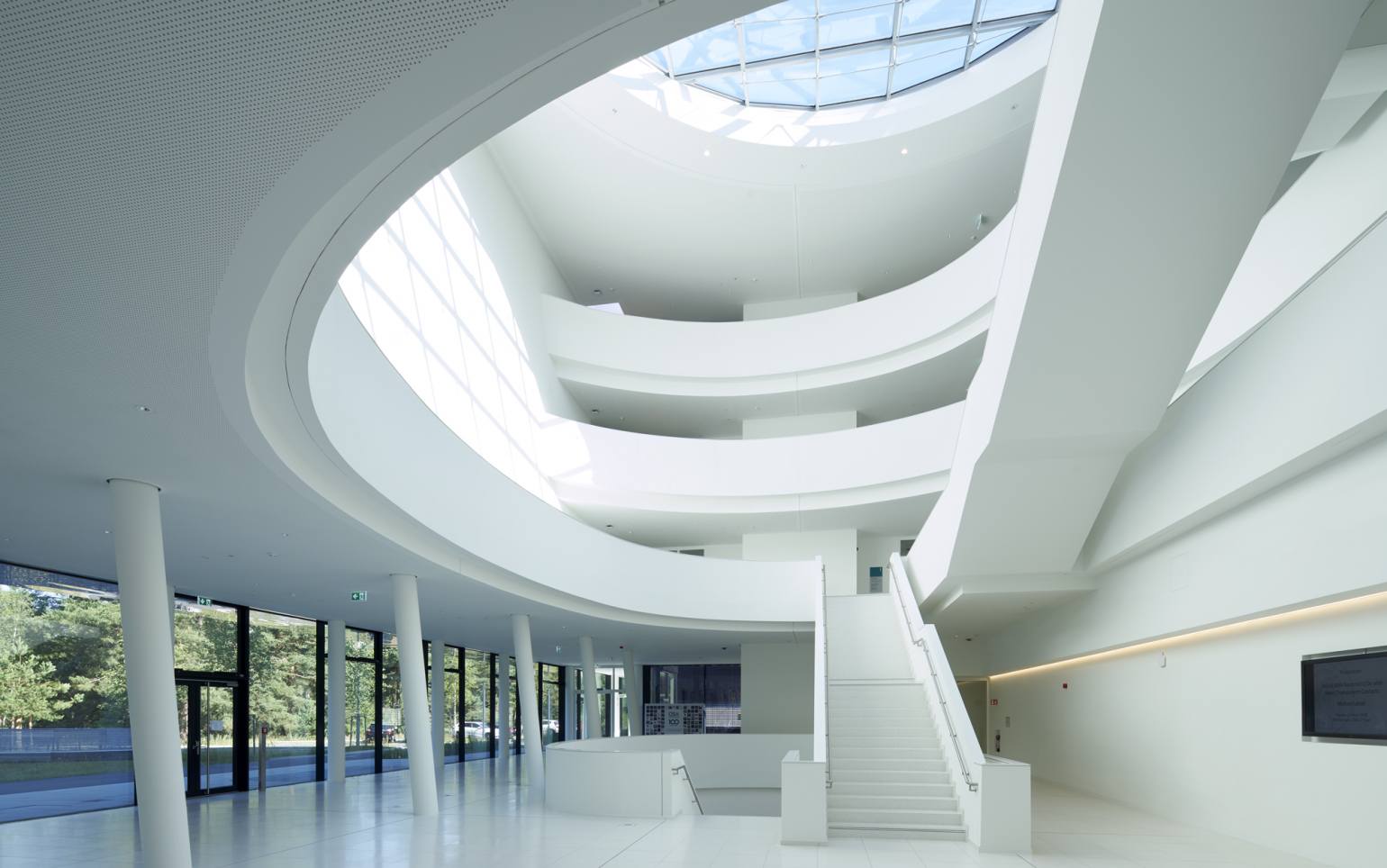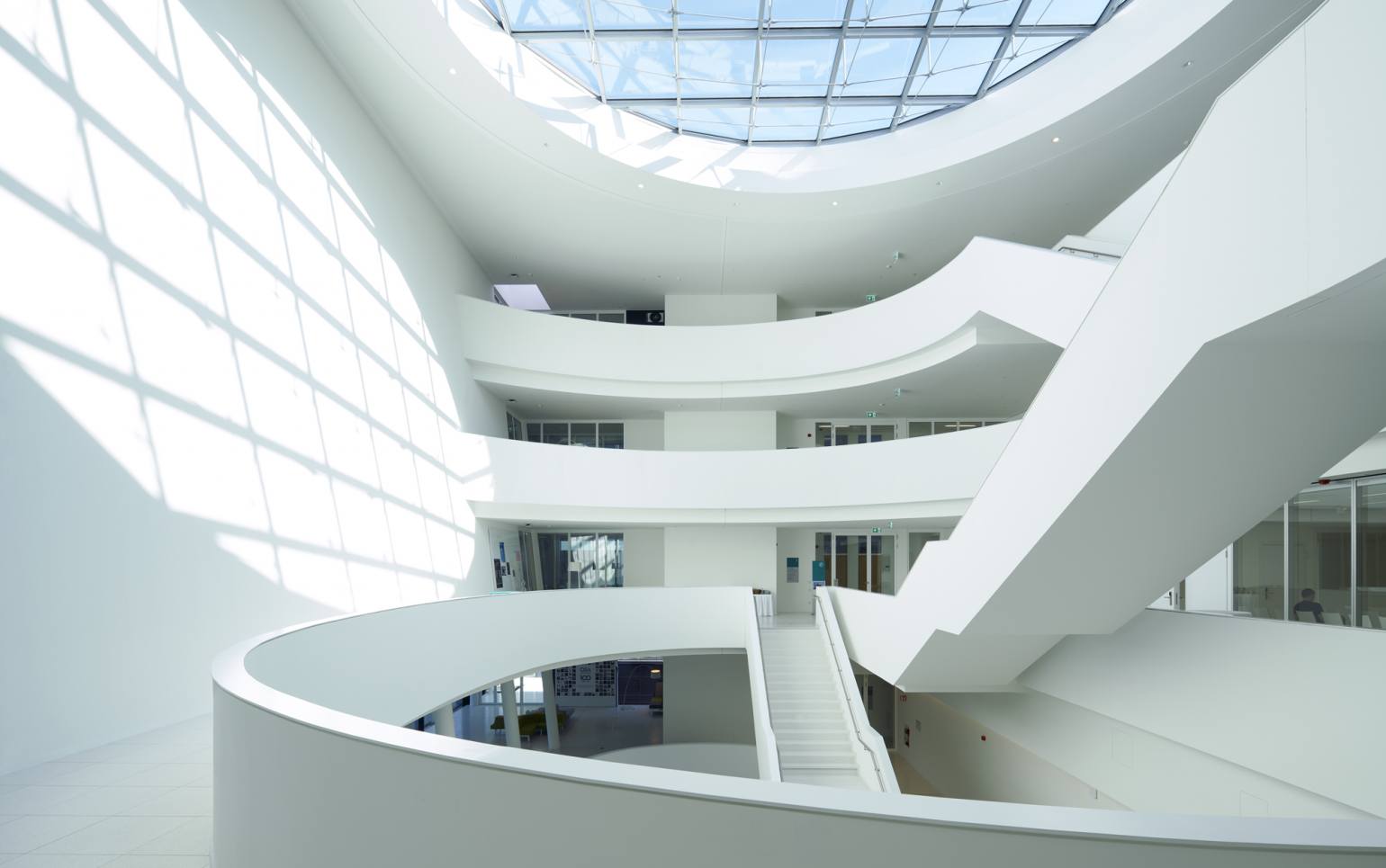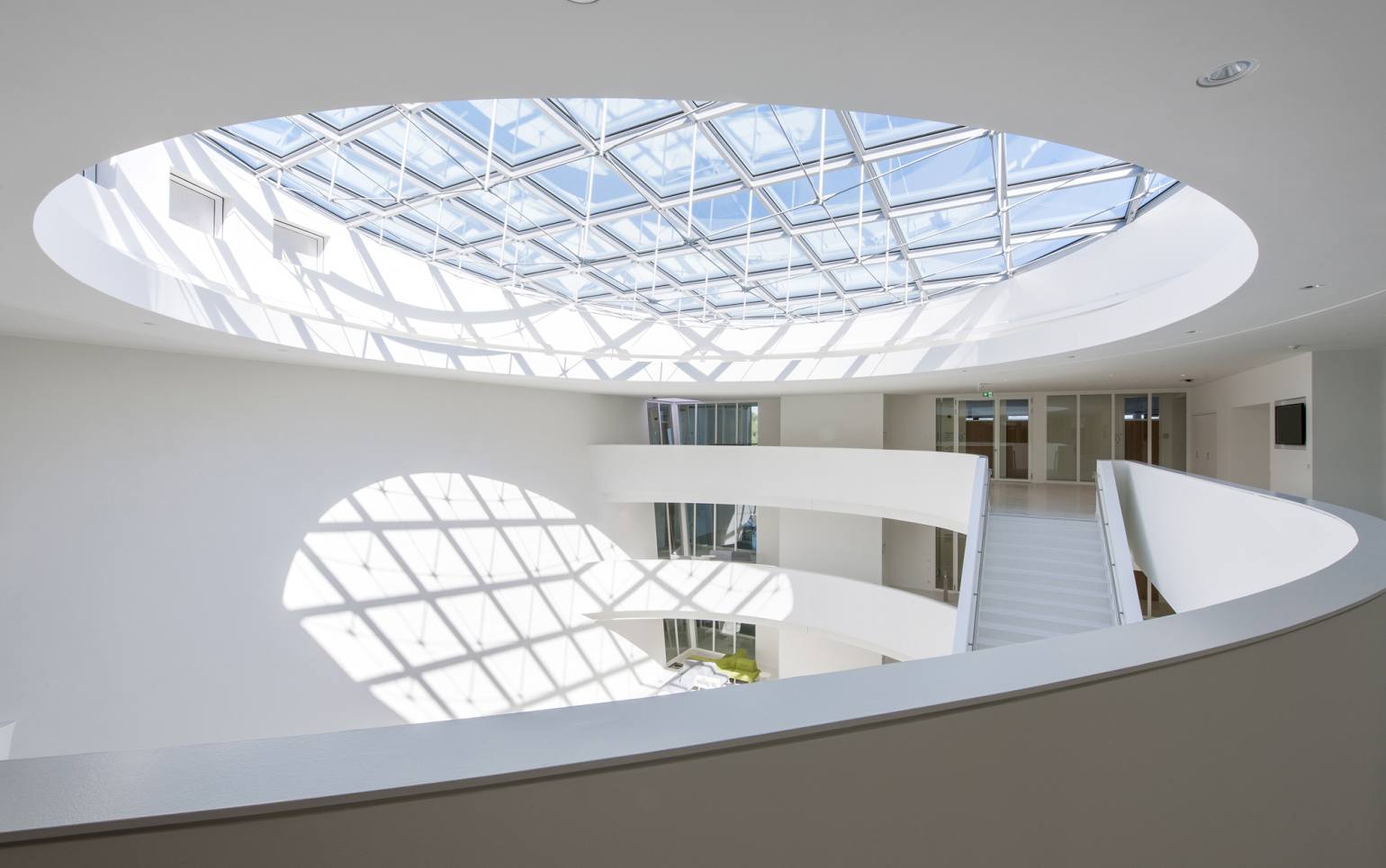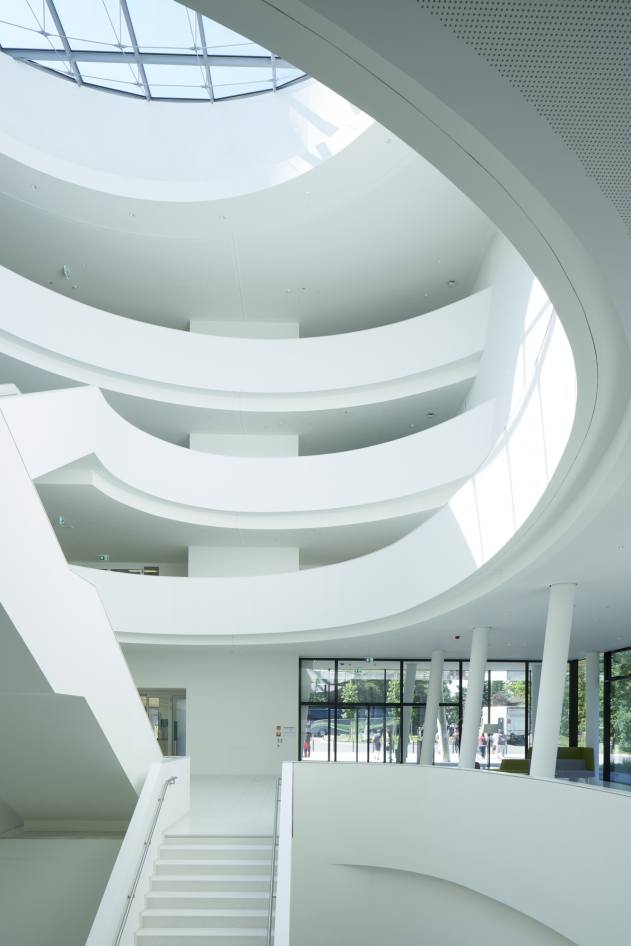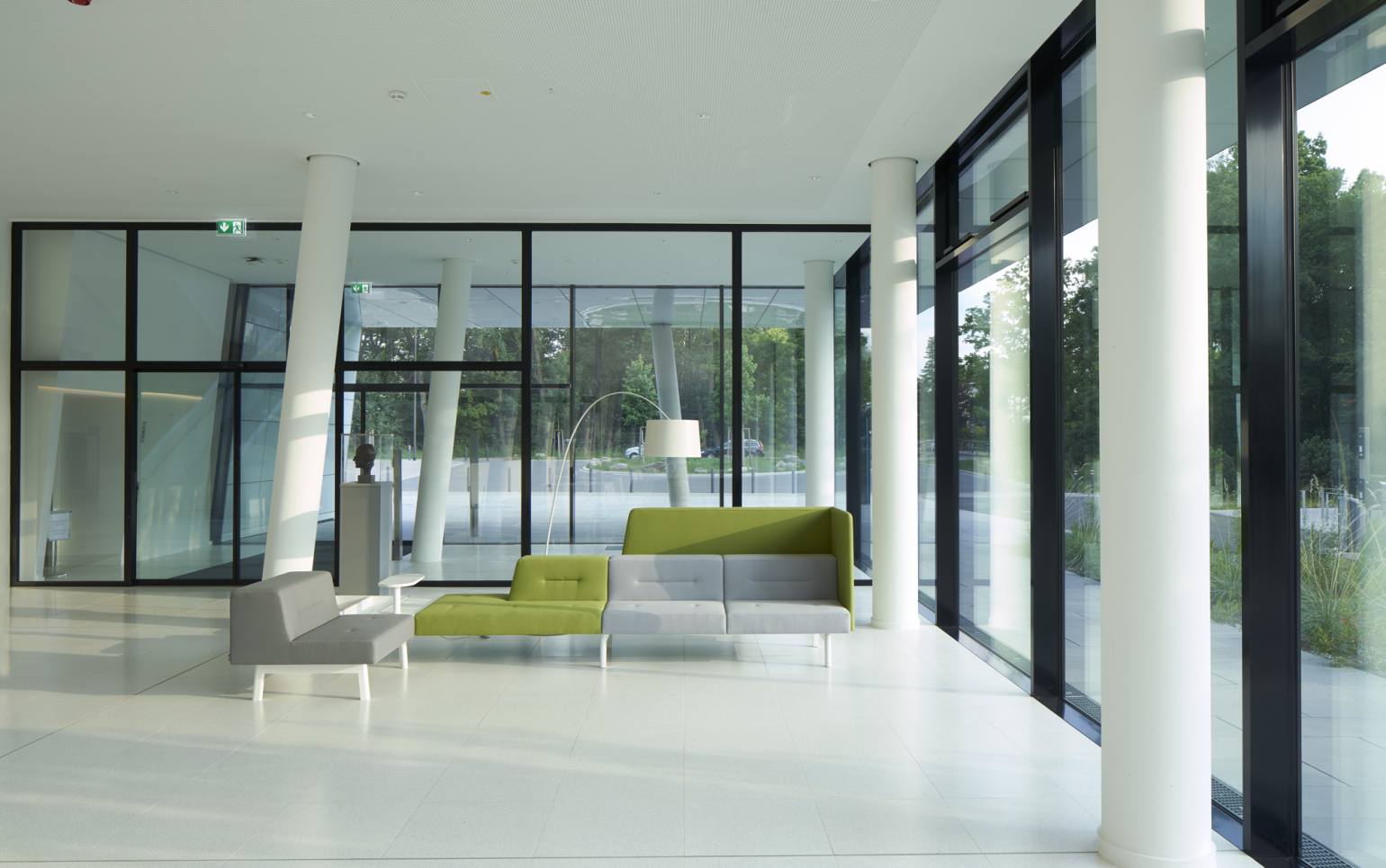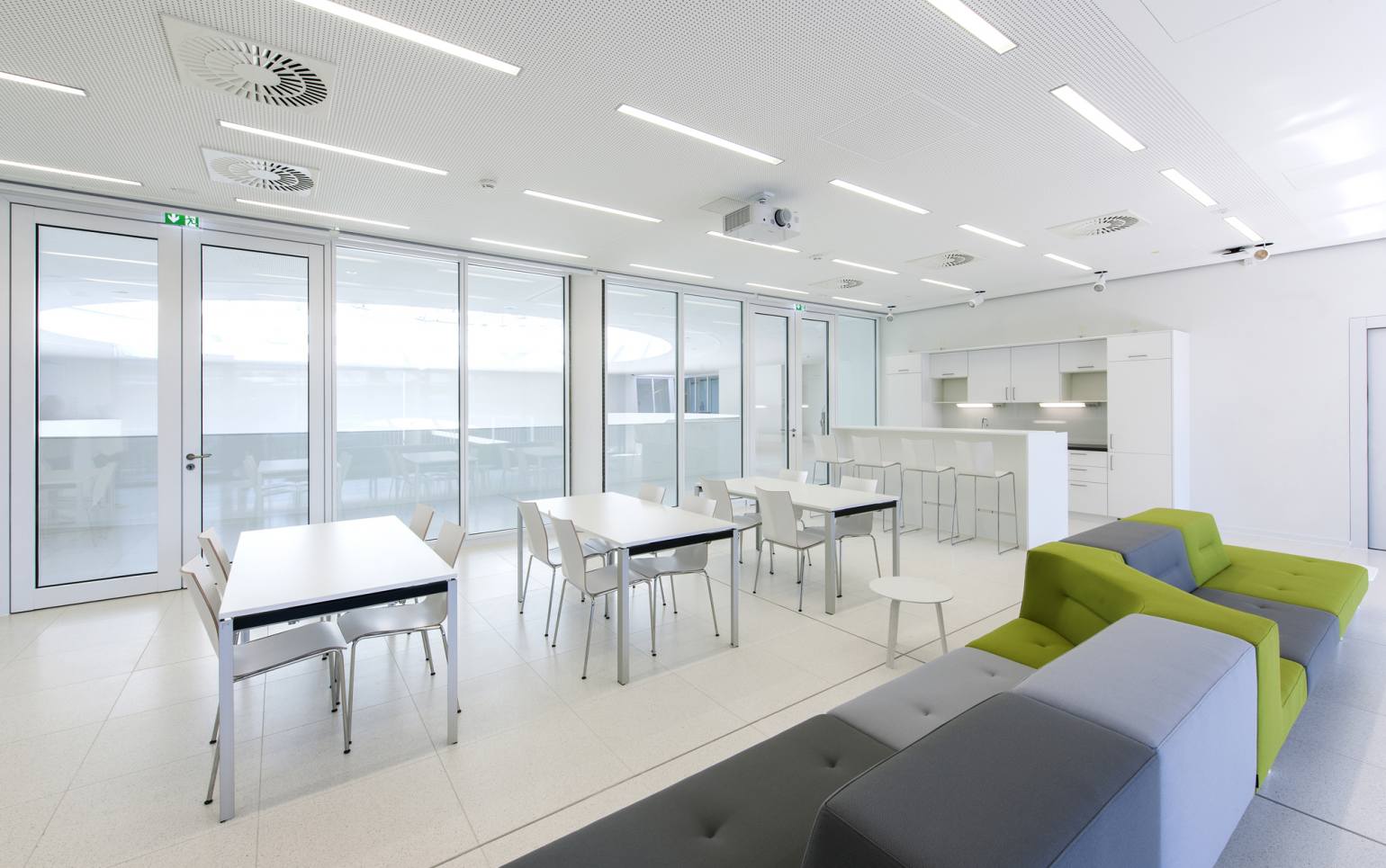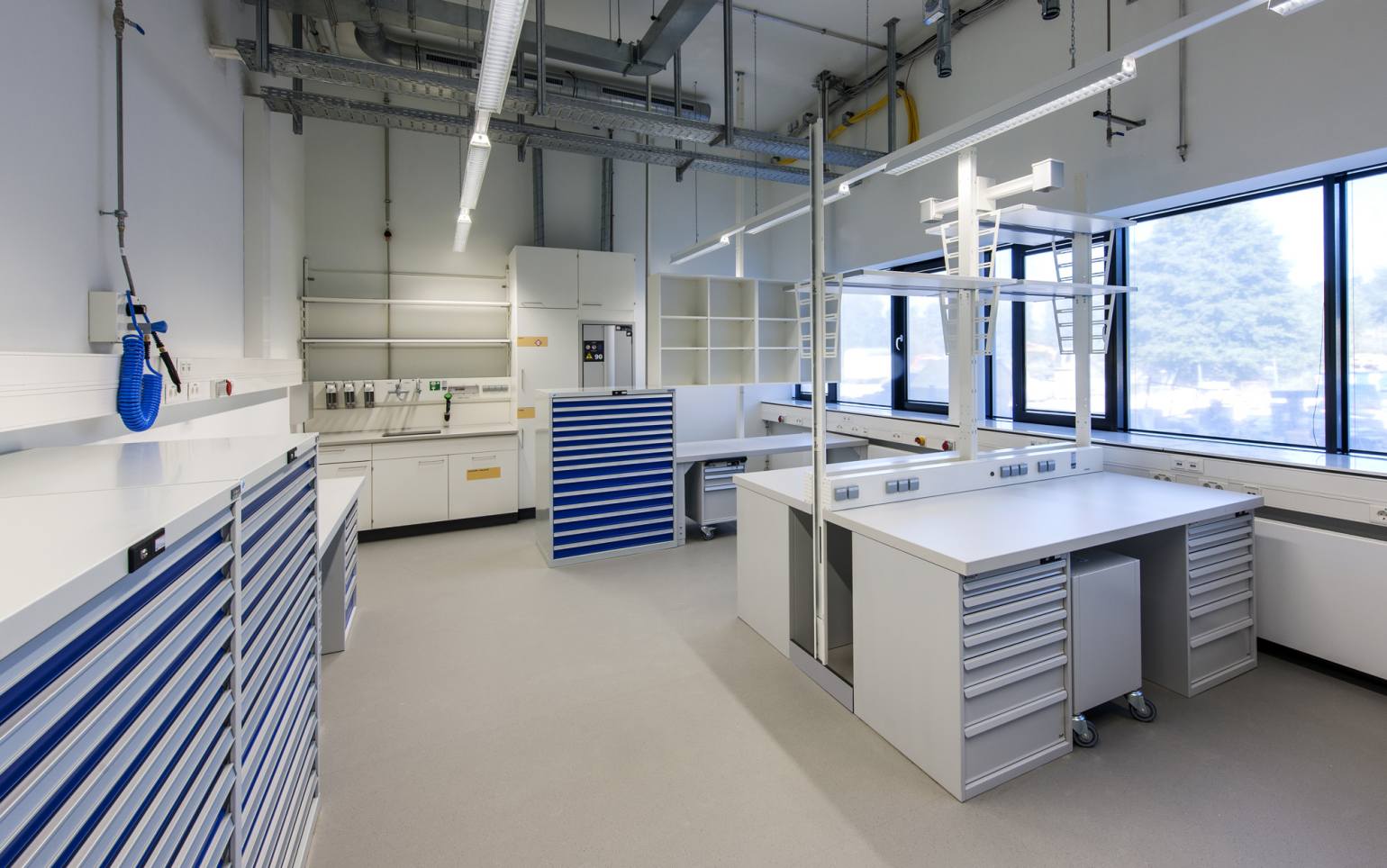Max Planck Institute for the Science of Light, Erlangen
Client
Max-Planck-Gesellschaft zur Förderung der Wissenschaften e.V., Munich
Competition 1st prize
2011
Start of Planning - Completion
2011 - 2016
Performance phases
2 - 9
Team
Planning: Andreas Wurmer, Tobias Hübner, Cedric Ehlers, Funda Meral, Site management: Andreas Ullrich, Markus Hennemann, Adreon Leipold, Klaus-Peter Wimmer
Building data
Total cost 59,000,000 €
Gross floor area 21,412 m²
The design of the new construction of the Max Planck Institute for the Science of Light, connecting the university grounds to a nature reserve area, is made up of three structures: a laboratory building, a workshop building and a clean room lab. The low height of the ensemble is a direct response to the landscape, while its structural focus engages in a dialogue with the entrance area and the nearby university buildings.
Accommodated on a total floor area of approximately 10,000 m², the space allocation plan includes excellently equipped scientific labs and technical facilities, measurement and clean rooms, workshops, offices, as well as a seminar area and library. The three buildings of the institute are independent components in terms of architecture, functional organisation and building services equipment.
A high-gloss façade with reflective panels gives a first indication of the research conducted at the institute – the scientific study of light. Light only becomes visible when scattered by material: the black glass of the façade represents darkness, while the reflections connect with the surrounding environment and "dematerialise" the structure. Experiments in the optics labs are conducted in the dark and involve visualisation of effects like the linear propagation of light emitted by lasers, or light split up into its component colours by prisms.
These themes are echoed by the dark, stripy, yet also colourful design of the façade, contrasting with the white entrance hall that opens up to a huge source of light in the form of a big round skylight in the roof.

